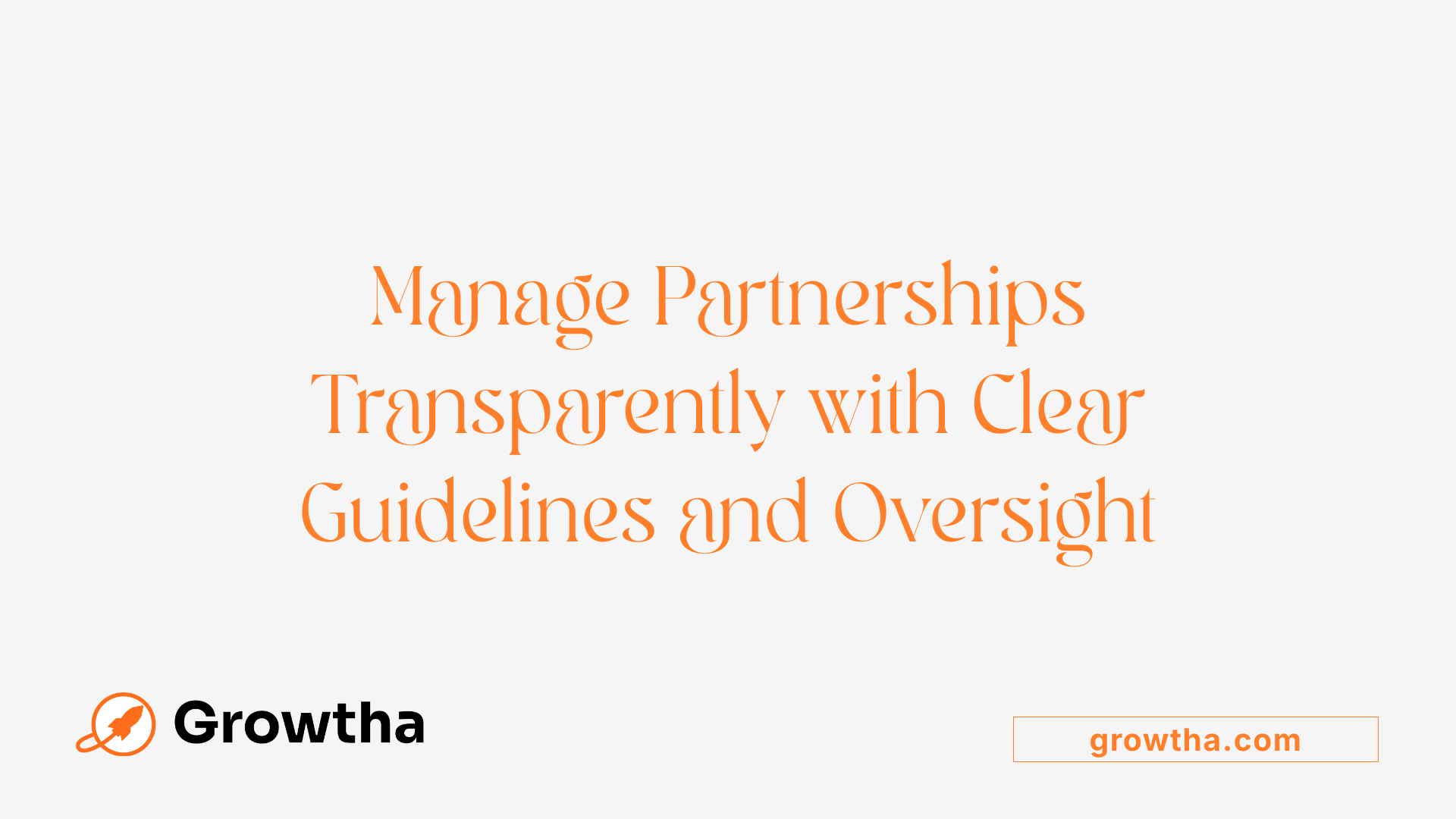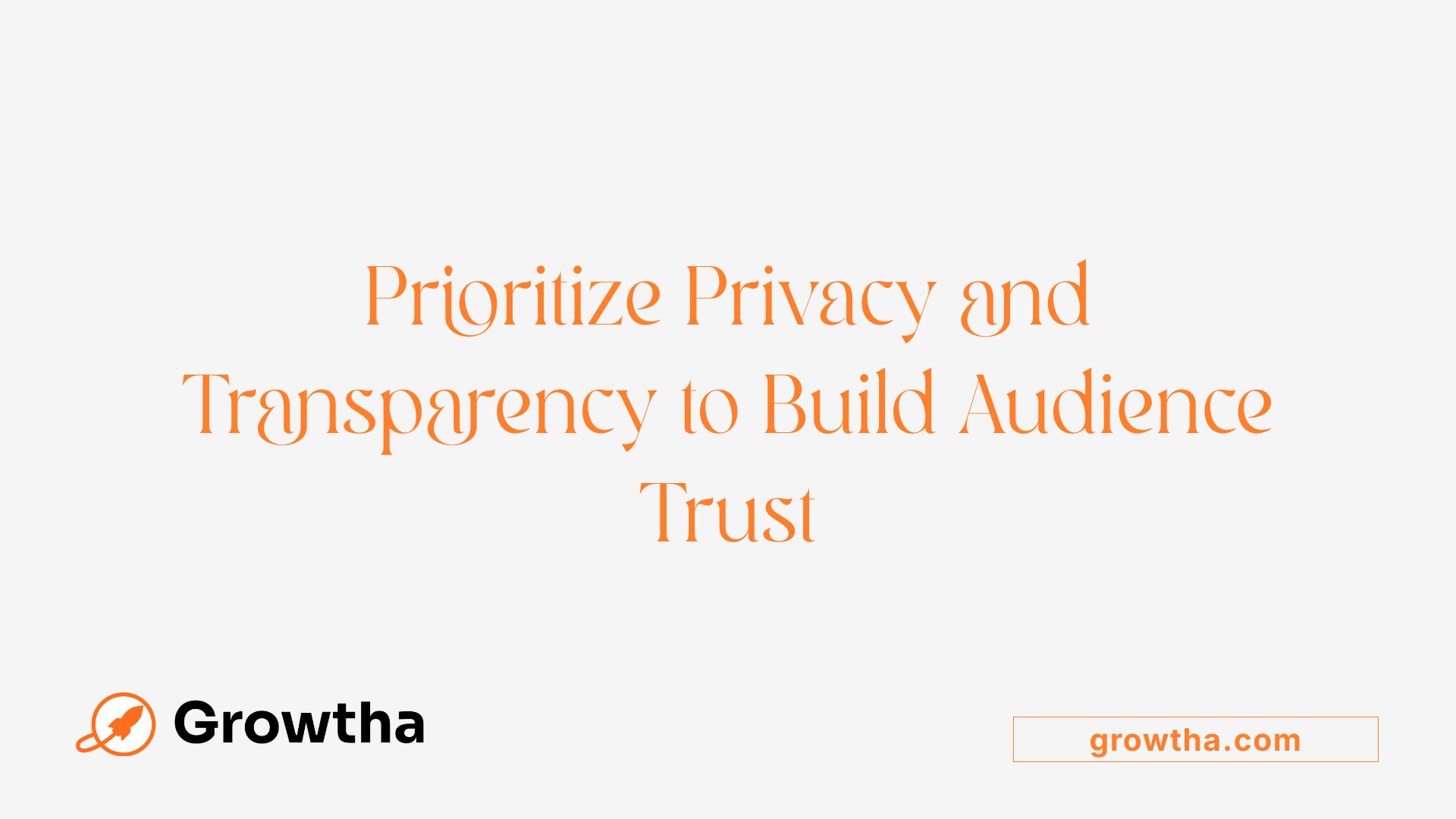Best Practices for Healthcare Influencer Collaborations
Transforming Healthcare Communication Through Influencer Partnerships


Best Practices for Healthcare Influencer Collaborations
The Rise and Impact of Healthcare Influencer Collaborations
In an era where trust and authenticity are paramount, healthcare organizations are increasingly turning to social media influencers to educate, engage, and influence health-related decisions. With 82% of patients likely to follow advice from healthcare influencers and 70% of healthcare marketers adopting influencer strategies, the sector is witnessing a significant shift. This article explores the best practices, strategies, and regulatory considerations that are vital for successful and ethical healthcare influencer collaborations, ensuring maximum impact while maintaining integrity.
Defining Clear Goals and Expectations

Setting measurable objectives
Establishing clear, quantifiable goals is fundamental for successful healthcare influencer collaborations. These objectives might include increasing brand awareness, educating specific patient groups, driving website traffic, or generating qualified leads. Defining KPI targets such as engagement rates, click-through rates, and conversion metrics helps track progress effectively.
Clear goals enable both parties to align their efforts and measure campaign effectiveness accurately. For example, if a healthcare organization aims to improve awareness about a new service, they might set a target to increase social media engagement by 30% over three months.
Establishing campaign scope
A well-defined campaign scope sets expectations and provides structure for collaborations. It involves outlining key elements such as the content types, platforms to be used, duration, and specific deliverables. Clarifying these details prevents misunderstandings and ensures that influencers understand their role in the broader marketing strategy.
Important considerations include the number of posts, videos, live sessions, or stories, along with deadlines and approval processes. Setting scope parameters also involves compliance and regulatory considerations, ensuring all content adheres to legal standards like HIPAA and FDA guidelines.
Aligning influencer content with organizational values
Authenticity is crucial in healthcare influencer marketing. Influencers should share content that truly reflects the organization’s core values and mission. This alignment builds trust with the target audience and enhances credibility.
Healthcare influencers should be selected based on relevance to the target audience, their expertise, and their ability to produce authentic, engaging content. Their messaging should resonate with their followers while aligning with organizational standards for accuracy, safety, and transparency.
Best practices for collaboration include co-creating content that feels natural, leveraging user-generated content, and utilizing platform-specific formats such as reels, stories, and educational videos. Regular communication, transparency about campaign goals, and mutual respect foster long-term, effective partnerships.
| Aspect | Description | Additional Notes |
|---|---|---|
| Goal-setting | Establish clear, measurable objectives | E.g., increase engagement by 20% in 2 months |
| Campaign scope | Define content types, platforms, timelines | Clarify deliverables and approval process |
| Values alignment | Ensure influencer messaging aligns with brand | Focus on authenticity and compliance |
| Engagement metrics | Track likes, shares, comments, conversions | Use tools for real-time monitoring |
| Regulatory compliance | Follow FDA, FTC, HIPAA guidelines | Disclose sponsored content properly |
In conclusion, defining explicit goals and expectations at the outset lays the groundwork for successful healthcare influencer campaigns. When both organizations and influencers share a clear understanding of objectives, scope, and brand values, campaigns are more authentic, effective, and compliant.
Effective collaboration combines strategic planning with ongoing relationship management, creating impactful health and wellness messaging that genuinely resonates with audiences and fosters trust.
Selecting the Right Influencers for Maximum Impact

How can healthcare organizations effectively select and manage influencers?
Choosing suitable influencers is pivotal in healthcare marketing, as it directly affects campaign credibility and effectiveness. Healthcare organizations should prioritize influencers who demonstrate genuine expertise, credibility, and relevance rather than simply focusing on follower numbers. For example, healthcare professionals like doctors, nurses, and researchers typically possess a high level of trustworthiness and can communicate complex information clearly.
Platform selection is also an essential aspect. LinkedIn is ideal for reaching healthcare professionals and industry decision-makers, while Instagram and YouTube are more suited for patient education and wellness content through visual storytelling. Evaluating influencers involves assessing engagement metrics, such as engagement rate, audience demographics, and authenticity signals. Content relevance and alignment with the organization’s values should guide influencer selection.
Managing these partnerships requires clarity and transparency. Establishing detailed collaboration guidelines—covering content scope, regulatory compliance, disclosure obligations, and content review processes—is necessary to safeguard scientific accuracy and legal adherence. Continuous oversight, including content approval and performance monitoring, ensures influencers uphold the organization's standards.
Using frameworks like PASTOR (Problem, Amplify, Story, Transformation, Offer, Response) can guide content creation, emphasizing evidence-based messaging and storytelling.
Long-term partnerships foster trust and authenticity, so building ongoing relationships through consistent communication and performance evaluation via analytics tools is beneficial. Regularly tracking key performance indicators like reach, engagement, website traffic, and conversions helps optimize future campaigns.
Moreover, compliance with healthcare regulations, such as FDA guidelines for medical claims, HIPAA for patient confidentiality, and FTC disclosure rules, is non-negotiable. Transparent communication about sponsorships, clear disclaimers using #ad or #sponsored tags, and verified credentials of influencers protect both the organization and consumers.
In summary, effective influencer management in healthcare hinges on selecting credible, relevant individuals; establishing transparent, detailed collaborations; regularly monitoring performance; and maintaining unwavering compliance with industry regulations and ethical standards.
Creating Authentic and Compliant Content

How can healthcare influencers create authentic and compliant content?
Healthcare influencers play a crucial role in shaping public understanding of health topics. To ensure their content resonates genuinely while adhering to regulations, they must focus on accuracy and credibility. All information shared should be evidence-based, sourced from reputable experts, organizations, or peer-reviewed studies. This approach not only builds trust but also ensures the advice is reliable.
Transparency is vital in influencer collaborations. Influencers should clearly disclose any sponsorships, partnerships, or paid collaborations, following guidelines set by authorities like the FTC. Proper labeling with hashtags such as #ad or #sponsored signals to the audience that the content is part of a promotional effort, maintaining honesty and transparency.
Patient privacy and HIPAA compliance are non-negotiable. Influencers must protect sensitive health information by anonymizing any patient stories or testimonials and avoiding the sharing of personally identifiable information. Using secure communication channels, obtaining explicit consent, and adhering to privacy regulations safeguard both the influencer and the organization from legal repercussions.
Authenticity can also be fostered through the use of genuine stories, such as first-person testimonials or patient success narratives, provided they are shared with full consent. Combining these personal insights with professional expertise enhances credibility and creates a relatable connection with viewers.
Empathetic language and responsible communication about sensitive health topics help to avoid misinterpretation or undue alarm. Influencers should steer clear of medical jargon when speaking to lay audiences, instead opting for clear, accessible language.
Overall, by prioritizing accuracy, transparency, and privacy, healthcare influencers can produce content that not only informs but also strengthens trust. Authentic, compliant content ultimately advances health literacy while respecting ethical and legal boundaries.
Measuring Success and Analyzing Campaign Performance
What metrics are used to measure the success of healthcare influencer campaigns?
Healthcare influencer campaigns can be complex to evaluate, as they involve multiple objectives such as increasing brand awareness, improving patient education, and driving specific actions like appointments or product inquiries. To capture this multifaceted impact, organizations rely on various metrics.
Primarily, engagement rates—comprising likes, shares, comments, and the quality of interactions—are fundamental. These metrics indicate how well content resonates with the target audience. High engagement rates, especially notably above industry averages, suggest strong viewer interest and message effectiveness.
In addition to engagement, reach and impressions are critical. Reach measures unique viewers exposed to the content, while impressions tally total views, including repeats. Follower growth on social platforms also signals increased interest and expanding influence.
Beyond awareness, conversion metrics track the direct actions influenced by campaigns. These include website visits, appointment bookings, referral traffic, and specific lead qualities, such as inquiries from qualified healthcare consumers or patients. Tracking unique links and UTM parameters helps attribute these actions accurately.
Furthermore, assessing the impact on brand authority involves sentiment analysis—gauging audience attitudes toward the brand or organization. Positive sentiment and trust indicators reinforce authenticity and credibility.
Metrics specific to healthcare settings also involve measuring healthcare professional engagement, the effectiveness of patient education, and compliance adherence. These offer insight into how well the content communicates accurate information and supports regulatory standards.
In essence, the success of healthcare influencer marketing is determined through a combination of these quantitative KPIs—such as engagement rate, reach, conversions—and qualitative insights from sentiment analysis and regulatory compliance checks. Combining data from platform analytics, website tools, and customer feedback provides a comprehensive understanding of campaign performance.
Framework for evaluating influencer campaign effectiveness
| Metric Category | Description | Examples of Measurement Tools |
|---|---|---|
| Engagement Metrics | Likes, comments, shares, interaction quality | Social media analytics dashboards, third-party tools |
| Reach and Impressions | Audience size and content exposure | Platform native insights, analytics platforms |
| Follower Growth | Increase in social media followers | Social platform analytics |
| Conversion Metrics | Website traffic, lead generation, appointment bookings | Google Analytics, CRM systems |
| Lead Quality and Actions | Qualified inquiries, patient sign-ups | Referral tracking, form submissions |
| Brand Sentiment and Authority | Audience perception, trust, message credibility | Sentiment analysis tools, surveys |
| Regulatory Compliance | Adherence to advertising standards and disclosures | Compliance audits, legal review processes |
This multi-layered approach ensures a robust assessment, enabling healthcare organizations to refine their influencer strategies, maximize ROI, and maintain trust and integrity in their communication efforts.
Legal and Ethical Considerations in Healthcare Influencer Marketing
What are the legal and regulatory considerations in healthcare influencer marketing?
Healthcare influencer marketing operates within a complex legal landscape that emphasizes transparency, accuracy, and patient privacy. One of the most critical aspects is adherence to the Federal Trade Commission (FTC) guidelines. These rules require that influencers clearly disclose sponsored content or material connections with brands by using hashtags like #ad, #sponsored, or similar disclosures that are conspicuous and understandable to the audience. This transparency ensures consumers are aware of the promotional nature of the content.
Beyond disclosure regulations, protecting patient confidentiality is paramount. Influencers working within healthcare must comply with the Health Insurance Portability and Accountability Act (HIPAA), which safeguards protected health information (PHI). Sharing patient stories or testimonials necessitates explicit consent, and even hypothetical scenarios should be carefully crafted to avoid unintentional disclosures. Influencers and brands should establish clear protocols for handling sensitive health information.
Claims made in influencer content must be evidence-based and compliant with regulations set forth by agencies such as the Food and Drug Administration (FDA). Any promotional material for medical devices, pharmaceuticals, or health services must include appropriate disclaimers and adhere to specific guidelines to prevent unsubstantiated or misleading claims. For example, success stories or health improvements should be supported by credible data to avoid regulatory penalties.
Contracts and oversight are essential tools in managing legal risks. Clear agreements with influencers outline content scope, review processes, and compliance requirements, including the use of disclaimers and factual accuracy. Content should be reviewed prior to posting to ensure it meets legal standards and aligns with regulatory expectations. Moreover, ongoing monitoring of campaigns helps identify and rectify any violations, maintaining ethical standards.
Influencer campaigns must also consider state-specific laws, such as Arizona’s Medical Practice Act and Consumer Fraud Act, which regulate advertising practices and prohibit deceptive claims. Healthcare organizations should work closely with legal counsel to ensure all aspects of their campaigns comply with applicable laws.
In summary, successful healthcare influencer marketing necessitates a proactive approach to legal and regulatory compliance. This includes thorough influencer vetting, comprehensive contractual protections, meticulous content review, and consistently staying informed about evolving regulations across jurisdictions. By prioritizing transparency, accuracy, and privacy, healthcare brands can ethically leverage influencers while safeguarding their reputation and avoiding legal pitfalls.
Building Trust and Long-term Relationships
How can healthcare providers build trust and genuine relationships with influencers?
Healthcare organizations aiming to develop strong partnerships with influencers should prioritize transparency and authenticity. This involves clear, honest communication about campaign goals, expectations, and content standards. By being open about the intended messaging and respecting the influencer’s voice, providers foster a sense of mutual respect.
Selecting influencers who genuinely align with the organization’s values and have a solid presence within the target audience is crucial. These individuals should possess credibility, demonstrate genuine interest in healthcare topics, and be committed to delivering accurate information.
Long-term success depends on sustained collaboration rather than sporadic interactions. Building authentic relationships involves engaging with influencers regularly, providing personalized attention, and co-creating content that feels natural and relevant to both audiences.
Offering consistent value to influencers and their followers—such as educational resources, exclusive insights, or supportive engagement—solidifies trust and encourages ongoing partnership. This reciprocal approach, combined with adherence to regulatory standards, ensures that relationships are not only authentic but also credible.
Maintaining ongoing dialogue and being responsive to feedback demonstrate a real commitment to partnership. Transparency about obligations, disclosure practices, and regulatory compliance further enhances credibility.
In summary, creating trustworthy and lasting relationships with healthcare influencers hinges on honesty, relevance, shared values, and continuous engagement. When healthcare providers prioritize these principles, they cultivate partnerships built on mutual respect, authenticity, and shared commitment to health education.
Leveraging Influencer partnerships Ethically to Promote Healthcare Services
How can influencer partnerships be leveraged to promote medical practices and health brands ethically?
In the rapidly evolving landscape of healthcare marketing, partnering with influencers offers a powerful way to build trust and extend reach. However, it is vital to approach these collaborations with a strong commitment to ethics and transparency.
First and foremost, transparency is the foundation of ethical influencer marketing. Clear disclosures of sponsorships and material connections, such as using hashtags like #ad or #sponsored, are legally required and crucial for maintaining consumer trust. This transparency ensures audiences understand when content is paid or otherwise incentivized, fostering honest relationships.
Selecting the right influencers is equally important. Ideal partners should have an authentic voice, align with the healthcare organization’s values, and possess a strong, engaged presence within the target community. Their messaging should be accurate, evidence-based, and respectful of medical standards. Influencers should avoid promoting exaggerated, unsubstantiated claims or harmful treatments, instead focusing on credible, truthful content.
Creating content that emphasizes authenticity and credibility involves co-developing messages that resonate naturally with the influencer’s audience. This can include health tips, patient success stories with consent, behind-the-scenes insights, or educational videos, all crafted to deliver value and foster genuine connection.
Ongoing compliance with regulations such as those from the Federal Trade Commission (FTC), FDA, and HIPAA is paramount. Regular policy reviews, legal guidance, and monitoring of influencer activities help prevent violations and protect both the healthcare provider and the influencer.
Establishing long-term, genuine collaborations strengthens trust and credibility. Building relationships based on mutual respect and shared values encourages influencers to create authentic stories over time, which in turn boosts consumer confidence.
By focusing on transparency, honesty, and sustainable partnerships, healthcare organizations can harness influencer collaborations effectively and ethically. This approach not only safeguards the organization's integrity but also enhances the overall trustworthiness and effectiveness of healthcare marketing efforts.
Emerging Trends and Future Outlook in Healthcare Influencer Marketing
Use of AI and data analytics
Artificial Intelligence (AI) and data analytics are transforming healthcare influencer marketing by enabling brands to identify the most influential healthcare professionals (HCPs) and consumer advocates with precision. Advanced algorithms analyze engagement metrics, audience demographics, and content relevance to forecast trends and optimize influencer selection.
AI tools assist in predicting campaign performance and tailoring content to target audiences more effectively. For example, AI-driven platforms can suggest ideal influencers based on reach, authenticity, and alignment with healthcare values.
This technological integration not only streamlines influencer discovery but also allows for real-time performance monitoring, making campaigns more agile and impactful.
Multichannel campaigns (social media, webinars, VR)
Healthcare brands are increasingly adopting multichannel strategies to spread their messaging. Platforms like Instagram, TikTok, and YouTube remain central for visual storytelling, leveraging formats such as Reels, stories, and short videos.
Webinars and live virtual sessions provide in-depth education and Q&A opportunities, fostering engagement and trust. Virtual reality (VR) is emerging as a novel approach for immersive experiences, such as virtual visits to clinics or interactive health simulations.
Combining these channels allows brands to reach diverse audiences—from patients seeking education to healthcare professionals staying updated—creating a comprehensive ecosystem of information and support.
Integration of live streaming and interactive content
Live streaming and interactive content are reshaping healthcare influencer marketing by enhancing authenticity and immediacy. Live sessions, featuring Q&As with medical experts or patient success stories, foster real-time engagement and deeper connections.
Interactive content, including quizzes, challenges, and gamified health apps, encourages active participation. For example, 30-day fitness challenges led by influencers can motivate audiences while generating valuable user-generated content.
Such formats increase viewer retention and drive message recall, making health messages more memorable and credible.
Collaborations between healthcare professionals and patients
Partnerships between licensed healthcare providers and patient influencers are gaining momentum. These collaborations combine clinical authority with personal experience, creating compelling, trustworthy content.
Healthcare professionals bring credibility and technical knowledge, while patient influencers humanize and contextualize health practices. Examples include behind-the-scenes development of new health products, patient success stories with consent, and educational series.
Building long-term relationships based on transparency and mutual respect enhances authenticity and trustworthiness. Together, they serve as credible voices, influencing health behaviors more effectively than traditional advertising.
| Trend | Description | Impact |
|---|---|---|
| Use of AI and Data Analytics | Identifying influencers, forecasting trends, optimizing campaigns | Increased precision, performance monitoring |
| Multichannel Campaigns | Social media, webinars, VR experiences | Broader reach, diverse content engagement |
| Live Streaming & Interactive Content | Live Q&A, challenges, gamified experiences | Real-time engagement, higher recall |
| Healthcare Professionals & Patients | Collaboration for trust and authenticity | Stronger credibility, personal connection |
Current Industry Trends in Healthcare Influencer Collaborations
Current industry trends in healthcare influencer collaborations emphasize authenticity, transparency, and the strategic use of micro- and nano-influencers, who often accomplish higher engagement and better cost-efficiency. These collaborations are moving beyond traditional posts to include diverse formats such as videos, infographics, live sessions, and patient testimonials across multiple channels.
Partnerships increasingly involve healthcare professionals—such as doctors, nurses, and researchers—and patient advocates, fostering both clinical insights and personal narratives. These relationships are built on transparency, mutual respect, and long-term engagement.
Integration of advanced technology like AI enables precise influencer targeting and campaign analysis, ensuring relevance and regulatory compliance. Overall, these evolving strategies aim to build trust, improve health literacy, and influence health-related decision-making effectively, despite regulatory hurdles.
This overview underscores how healthcare influencer marketing is adapting through innovation, multi-channel integration, and strategic partnerships to meet the needs of modern healthcare communication.
Harnessing the Power of Influencer Marketing Responsibly
Effective healthcare influencer collaborations can significantly enhance credibility, awareness, and patient engagement when conducted ethically, transparently, and with strategic insight. By adhering to best practices—such as selecting authentic influencers, creating compliant content, and measuring meaningful metrics—healthcare organizations can foster trust, build genuine relationships, and ultimately improve health outcomes. Staying informed about emerging trends and regulatory updates ensures these collaborations remain impactful and compliant, paving the way for sustainable, long-term success in healthcare marketing.
References
- Building Trust Through Healthcare Influencer Partnerships
- Health & Wellness: A Guide to Influencer Marketing - SARAL
- Top 10 Tips for Healthcare Influencer Collaborations
- Influencer Marketing in Health Tech: A Strategic Guide - 5W PR
- Influencers in the pharmaceutical and medical device industry
- Influencer Marketing for Healthcare: What You Need to Know
- Influencer Marketing for Healthcare Professionals - Gethoot
- Essential contract guidelines for navigating influencer collaborations







